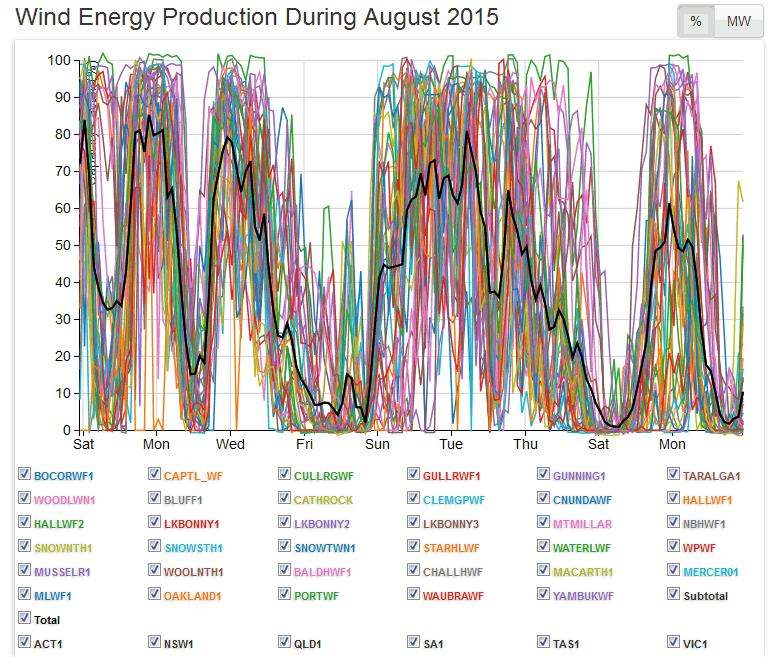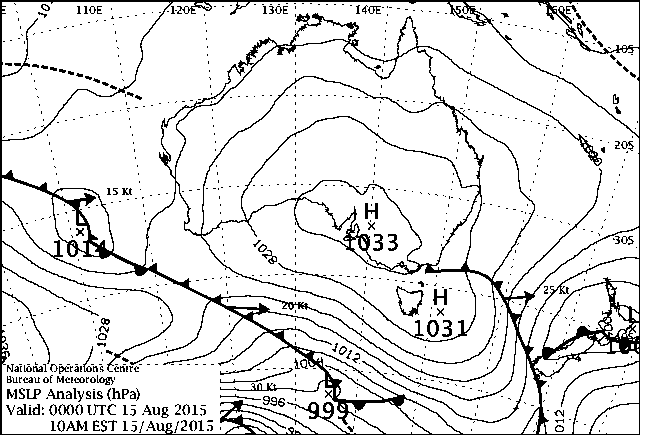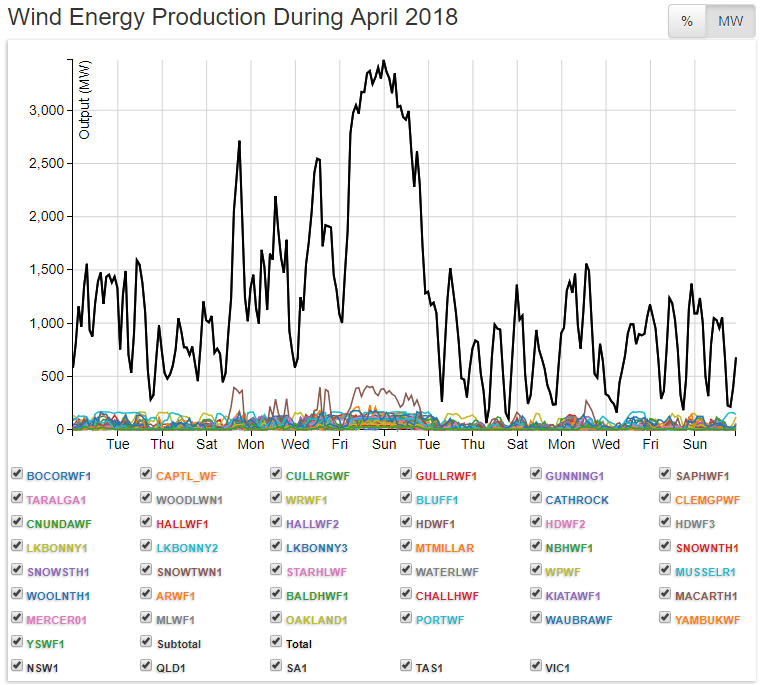
The natural result of plugging into wind and solar power is absolute chaos. It’s like inviting the Hells Angels to your daughter’s 21st birthday party and not expecting mayhem.
Those that kid themselves otherwise, fall into roughly 2 camps: dreamy, eco-zealots, happy to ignore everything the real world throws at them (especially facts antithetical to their narrative); and the professional kind, whose own personal financial success demands their undying loyalty to the same ideological cause.
Falling into the latter category, is the head of Australia’s Energy Market Operator (AEMO), Audrey Zibelman.
Audrey is part of a Yankee invasion, that includes AGL head, Andrew Vesey.
Zibelman drank the Kool-Aid years ago, when she joined the wind cult in New York State, and did her best to destroy its electricity supply. Now she’s running propaganda for the wind industry, Downunder; and is, quite apparently, intent on destroying the competitive advantage Australia’s once cheap and reliable electricity supply provided.
In this piece by the team at JoNova, Audrey takes us down the rabbit hole (again), as she attempts to turn dead-calm night, into bright and blustery day.
Even AEMO head admits solar panels are a big “disrupter” in Australia – fears big players may abandon grid
Jo Nova Blog
Jo Nova
25 April 2018
The land of the sunburnt country finds that the rapid uptake of solar is a headache, disrupting the grid, adding variability, making management more complicated. Read right through. The head of the AEMO gives an upbeat talk, but the ominous message is that solar panels are flooding in, there are lots of problems, and not only are baseload generators leaving the market, but there may come a day when things are so ludicrously expensive that big energy customers leave to generate their own too. Is that what the death of a grid looks like?
Audrey Zibelman is the head of the AEMO – Australian Energy Market Operator – which has the responsibility of managing the electricity and gas market and grid stability for all Australians. To hear her, you’d think the future is renewable, the transition is not being artificially forced on the market, and there is no alternative to alternative energy.
Zibelman tosses out pat free-market lines with a straight face, saying at 17:20 that we never really want governments to “pick a technology”, ignoring that this whole transition, all of it, is only happening because governments “picked a technology”.
Listen at 21:30 to get an idea of the diabolical complexity of trying to craft new price signals to make up for the damage done by dumb artificial price signals. This octopus of conflicting price signals would never occur in a real free market. If players could do the deals they wanted, they would pay for forward contracts on cheap electricity that they could guarantee next week, next year, every hour and every day. The other ten people in Australia that wanted to buy weather-changing-electrons would be free to pay ten times as much. I say “let them!”. That’s what freedom means.
I’d like to be free not to buy solar panels, and free not to pay for everyone else’s.
This is all spun as a world-leading success along the lines that disruption is a mark of success — mobile phones worked, so solar panels will. Hello? The government didn’t force us to pay $600 a household for other people’s “transition” iphones.
Glenda Korporaal, The Australian:
“Australia has the biggest pick-up of roof top solar anywhere,” Ms Zibelman said in a speech to the Centre for Independent Studies in Sydney. “We are seeing the equivalent of a power plant being built every season with people putting on more and more rooftop solar.”
She said the increasing role of solar power in Australia meant the energy market could suddenly lose 200-300 megawatts of power if the sky clouded over in a major city.
Actually, it’s not just cities losing power, it’s the whole national grid, which lost 1,000MW one day due to widespread cloud along the eastern seaboard.
Too much solar power doesn’t just make supply more unpredictable, it means demand is more variable too. The peaks are steeper and the troughs are lower.
In the past there was a gradual increase in demand for energy during the day, but with the increasing role of solar power there were now often spikes in demand in the evenings.
“It is a very variable system that we have to manage which is very different than before,” she said. “It’s a big disrupter.”
So let’s add 20GW of headaches and complexity and see what happens?
Wrap your head around these numbers. Apparently right now the AEMO are dealing with requests to consider adding another 20,000MW of unreliable, intermittent, subsidy-sucking energy to the Australian grid. This is the same grid that has a total peak summer demand in the order of 35,000MW. The total generation capacity of the grid is 54,000MW, which already includes more wind and solar than any nation built on a coal-gas-and-uranium quarry needs. How are any unsubsidized sensible baseload providers going to survive in this socialist market where crazy-brave squads of new entrants are still being drawn to fill gaps that aren’t there, weren’t there, and aren’t projected to open up soon? To everyone who says that renewables are nearly competitive (so sayeth Audrey), I say axe the next twelve years of Renewable Energy Targets then.
Windpower doesn’t make electricity cheap or reliable, so lets do more of it?
Australian wind patterns mean our entire wind generation across millions of square kilometers crawls to a near standstill roughly every ten days. What are the odds that extra wind turbines will change the prevailing wind patterns?
Sometimes one high pressure cell crashes our whole wind generation:


Sometimes clouds crash our solar power:

Likewise, adding more solar probably won’t add more hours of sunlight, nor change the clouds. But then, I could be wrong.
Not all of those new 20,000 disruptive megawatts will be built. Phew!
As Zibelman says at one point — (to paraphrase) when demand was 1000MW during the day, solar has reduced that demand to 500MW. But if your coal power station is more than 500MW, how do you keep that in business? Indeed. The answer is — with uber-complex government regulated pricing schemes apparently.
Worked for the USSR.
It’s so bad, big-players may abandon the grid
Ms Zibelman says we need to send the right “provide the right price signals” and the “market will respond”. The bad news is that the market is already responding, the price signals are a dog’s breakfast, and even diesel looks like the fuel of the future now.
Her big fear now is that the big players might get so fed up they go “off grid”. Oh No. No more cash cows:
Ms Zibelman said one of her biggest worries was the potential for “uneconomic bypass” in Australia, where major energy users could start leaving the existing energy system because they found it too expensive, instead using their own energy supply systems. — [Listen at 36:30]
The “uneconomic bypass” has already happened – it was back when Australian governments thought it was a good idea to use our power stations to change global temperatures. Now our whole grid is an uneconomic bypass.
Things could spiral downhill:
She said this could lead to the cost of electricity having to be borne by a decreasing number of customers.
–it’s a good thing for the individual when they disconnect. Horrible for the rest of us…
Zibelman talks of free markets but doesn’t seem to realize the market she runs is so unfree it has been screwed inside out. For the last hundred years people were not “better off” if they left the grid. Other customers didn’t care if big players left to do their own thing (more supply, less demand, lower costs, right?). Big players stayed because mass electricity production in centralized generators was so bountifully, beautifully cheap that nothing else could beat it.
Australians are putting panels on their roofs in desperation
Ms Zibelman puts the nicest spin possible on everything, saying that the rapid uptake of solar panels is due to “the rapidly falling cost of renewable energy” that makes it the “preferred investment”. She didn’t say that almost no one is paying the full and fair price for solar panels and the government orders other customers to pay thousands for each installation.
She didn’t say that because electricity is obscenely expensive, even subsidized, uncompetitive renewables look appealing to bleeding customers.
Think of solar panels on roof tops as a form of palliative care for a dying grid.
Watching Zibelman, you might also think that complexity has no price, simplicity has no value, and the Bureau of Meteorology has an important role in driving our energy policy.
Jo Nova Blog
Looking for complete chaos? If you’re not game to invite the Hells Angels to Katy’s birthday party, why not invite wind power to your power grid instead?
Here’s what’s been dished up by every turbine (with a notional capacity of 4,675 MW) on the Eastern Grid during April:


Hi All
wrt to to the AEMO graph for April 18, Integrating to find area gives approximate generation 1335 MW and capacity factor of approx 0.25. They are ball park figures at best due to the methodology of recreating the data files (digitisation ), but still instructive.
Russ
Steven,
While we appreciate your apology, it’s no excuse for our own stupidity.
As an American, I’d like to apologize for our export of toxic waste to your country.
Head’s up – Zibelman’s previous masterpiece, New York’s power grid, is heading towards disaster. Thanks, Audrey:
Bring it on! C’mon Aussie c’mon! Embrace those renewable energy challenges with gusto. There’s a large crowd of virtue signallers supporting the renewable energy push in Australia: two cars in the driveway, mostly-organic mostly-vegan food in the refrigerator, cell phones for everyone in the family, expensive coffee machine on the kitchen counter, Saturday morning appointments at the gym, kid’s soccer match and coffee shop, etc. Renewable energy seems so idyllic, cheap and pollution-free. Who doesn’t like those clear blue skies, Nirvana-like countryside and crystal clear rivers and streams? This can be you! Take up the position of world leader. Show the rest of the world how it’s done! Dump those dirty coal-fired power plants and ground-sucking mines immediately. Whale oil and buggy whips have been tossed on the dump of technological advancement. Fossil fuels will be too with wind turbines and solar panels taking over. Bring on the blackouts. They’re idle threats from fossil fuel shrills. Who needs cheap, grid electricity when you have solar panels on the roof?
(Dripping with sarcasm.)
Sadly, that’s the world occupied by all too many in the Liberal party, who ought to be the arch enemy of the faux green virtue signaller.
The ultimate and only way to rectify this rolling disaster is to nationalise the entire grid and every subsidy sucking parasitic entity that has rocked in for the endless party.
Designing, building, and operating a fleet of government owned nuclear power stations must become the goal.
Costly indeed – but no more so than the endless pipeline of “renewable” subsidies.
Public utilities (providing electricity, water, sewerage reticulation, gas, and telephony) are essential when individuals can no longer afford or adequately provide these fundamental services for themselves.
It’s time for politicians to step up and meet their obligations to the community that elects them.
The trouble is they see themselves has having ‘obligations’ to others who are not the voters, who also have a foot in the other camp just to make sure they can maintain their influence no matter who is in Government. You have to ask the question who is the obligated and who is the obligator?
We minions are the ones who are paying the price of this nightmare no matter which is which.
The sooner we have a Government Leader who can stand up and say with complete honesty (and a nose that does not grow) they are working for the people of this Nation the better.
Reblogged this on "Mothers Against Wind Turbines™" Phoenix Rising….
There are 3 fundamental faults in wind/sun powered “renewables”: 1) hardware and storage dud. 2) no use for climate saving 3) politicians throwing our good money after bad and, likely, corruption, financial and/or political.
The last may explain a lot of ongoing money wastage, and lies.